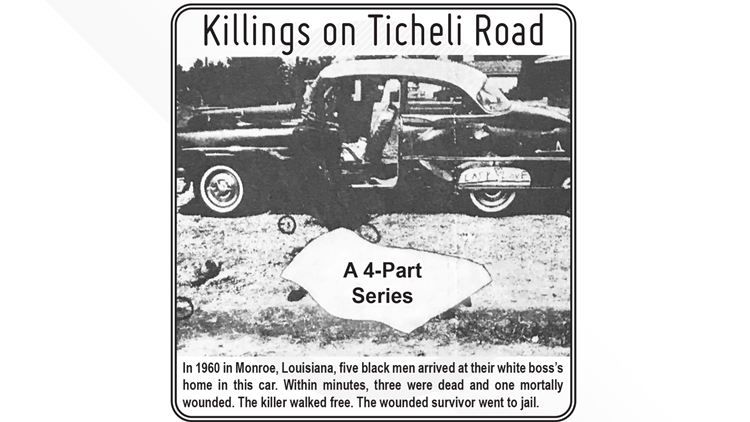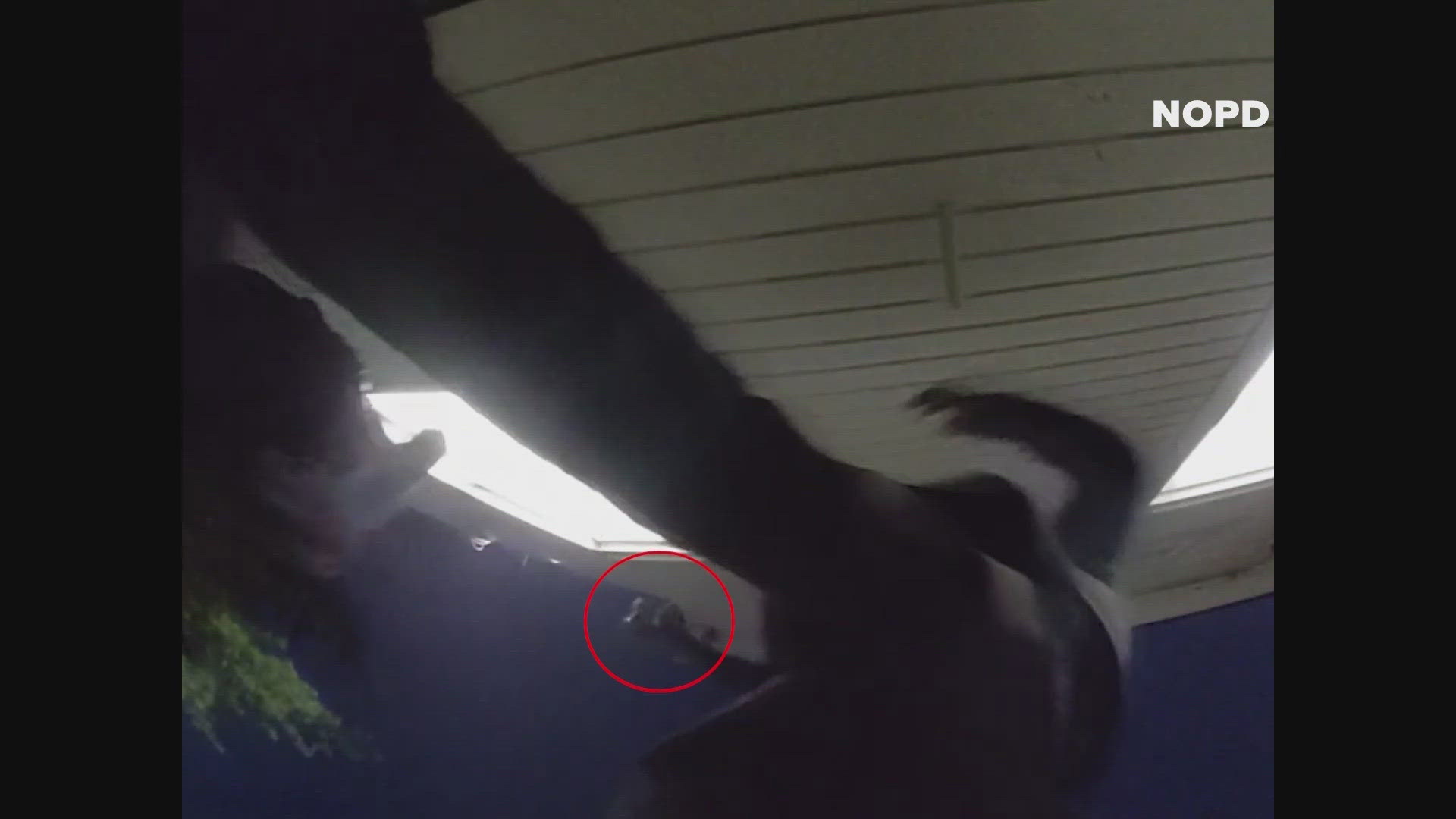BATON ROUGE, La. — During the 1950s in northeast Louisiana, future Klansman Robert Fuller was a familiar face to law enforcement.
He lived on the outskirts of Monroe. Local police considered Fuller a thug, and the FBI opened a file on him because of his involvement in prostitution. Fuller then started a sanitation business that employed his sons and several young Black employees. Their job was to empty human waste from septic tanks.
In July 1960, five of the Black employees showed up at his home, their normal gathering spot, one Wednesday morning. Minutes later, three were dead, a fourth mortally wounded. A fifth, also wounded, would survive.
Fuller would later claim he shot all five in self-defense. He said he grabbed a double-barreled shotgun from his truck–reloading three times–to fend off men swarming him with knives.

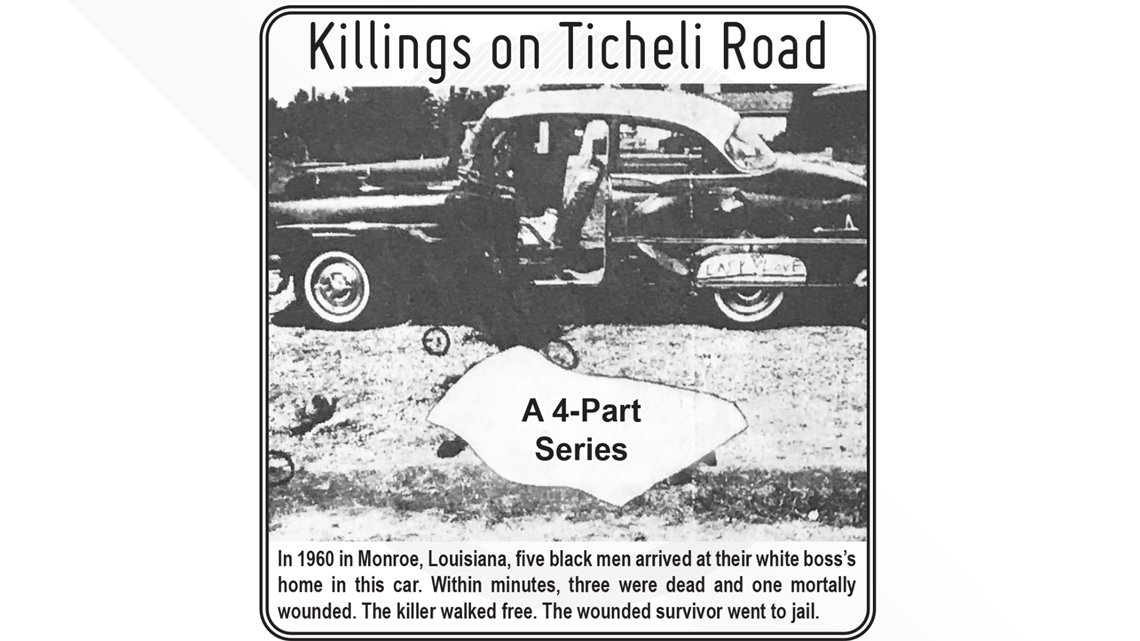
The horrific event was reported in newspapers, but two versions of the events would emerge.
One was Fuller’s self-defense claim–that he was simply saving his family from his attackers.
The other, in the Black press, was a story of mistreatment, of tensions over employees forced to beg for paltry wages and of racial animosity against Black employees. Black newspapers reported that Fuller owed the men money. By these accounts, there was no way Black men would attack a white man in an all-white neighborhood at a time when Blacks around the Jim Crow South were still struggling to secure their civil rights.
Even the FBI, in a statement released for this story, compared the scope of the killings to the 16th Street Baptist Church bombing in Birmingham, Alabama, that came just three years later in 1963. In that bombing, one victim was permanently blinded while four other girls, ages 11 to 14, were killed.

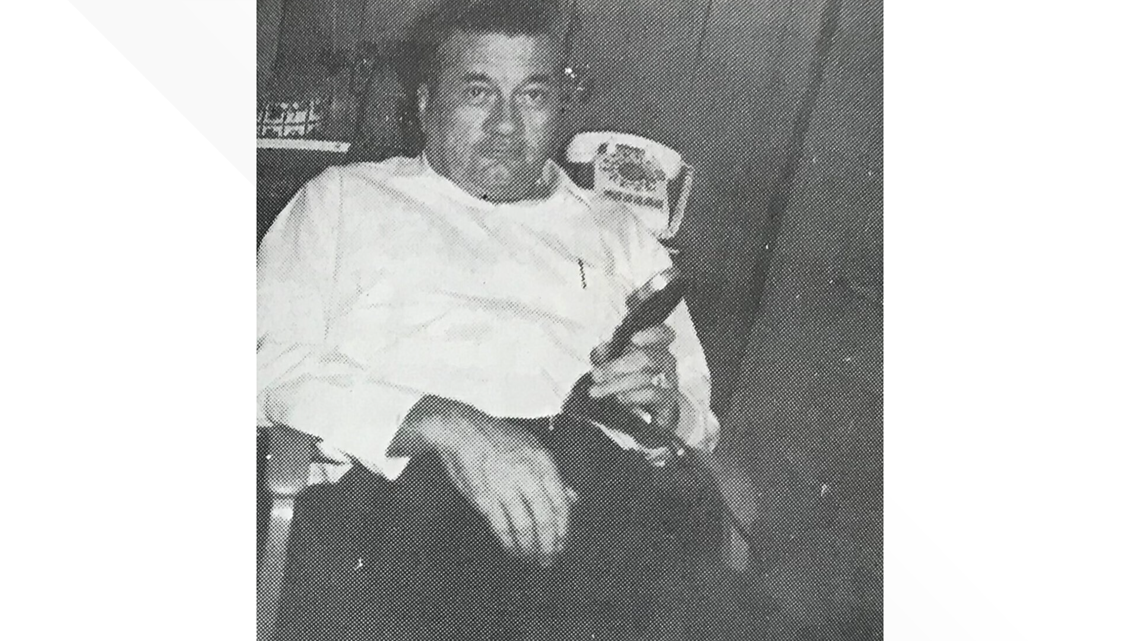
Fuller’s notoriety from this bloodbath, coming six months before the formation of the Original Knights of the Ku Klux Klan, would prompt him to join the group in 1961 and eventually make him a statewide Klan leader. And he would do that under the nickname “Shotgun,” taken from the events of that bloody day.
A lengthy investigation, including dozens of interviews and FBI files that the LSU Manship School of Mass Communication’s Cold Case Project obtained through the Freedom of Information Act, challenges Fuller’s claim of self-defense and paints a more extensive picture of what happened that day, including the possibility that Fuller had help in killing the men.
The Manship School investigation also illuminated another potential injustice–that while Fuller, who died in 1987, was never charged with a crime, the lone survivor of the shooting was charged with trying to murder Fuller and later served time in prison.
Racial disparities like that were typical in that day and helped fuel the suspicions that many Blacks still have about law enforcement. Legal experts, including former U.S. Sen. Doug Jones of Alabama, the prosecutor who put two of the Birmingham bombers behind bars, say the 1960 investigations by the Ouachita Parish sheriff, coroner and district attorney were so incomplete that they amounted to a travesty of justice.

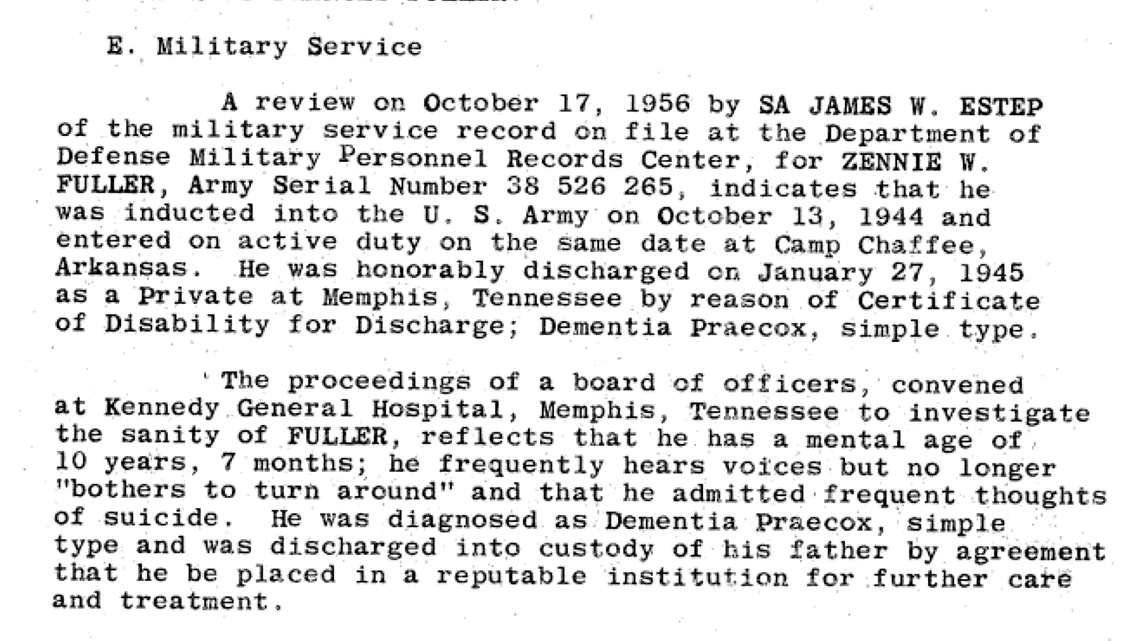
“There’s no question in my mind that he murdered folks,” Jones said after reading the FBI documents about Fuller at the Manship School’s request. “And there is no question in my mind that local authorities and local grand juries in the community just let him get away with it,” Jones said.
The FBI investigated the killings between 2008 and 2010 in response to congressional pressure to examine unsolved murders from the civil rights era. It had received a tip that Fuller had an accomplice, but questions linger about whether it did enough to resolve the case.


A HISTORY OF VIOLENCE
In “Ten Years of Leadership in the Original Ku Klux Klan of America, Inc.," a book that Fuller and KKK enthusiast Jack Barnes published in 1972, there is a photo of Fuller. He is wearing a dark-colored robe marked with a cross, a symbol of the crucifixion of Christ. Fuller looks straight at the camera, hands folded together. He stands more than six feet tall with a thickening waist, black hair and brown eyes.
Born Nov. 11, 1920, and christened Zennie W. Fuller, he was mostly known as Robert. He was married for the first of three times at the age of 16 in 1937 and was drafted into the Army in May 1944.
Violent with quickly changing moods, he was discharged in early 1945 with a psychological disability, diagnosed as Dementia Praecox, Simple Type, or what is now called schizophrenia. Elements of schizophrenia include loss of ability to plan and remember, psychosis, hostility and erratic or unpredictable behavior.


FBI files note that an Army board found he had the mental capacity of a 10-year-old, with emotional instability and suicidal tendencies. Included in the files was a statement by Fuller that he heard voices but no longer “bothers to turn around.”
Fuller was released into the custody of his father with an agreement that he would be placed in an institution for treatment. There is no evidence that this ever happened.
In the following years, according to court records and FBI files, Fuller defaulted on debts and racked up charges for reckless driving, receiving stolen goods, fighting and disturbing the peace. Additionally, he was charged with living off the means of a prostitute and for soliciting a prostitute.
FBI Senior Resident Agent William Dent was one of the agents investigating Fuller. Dent had moved from the West Coast to Monroe with his wife, Charlottie, and their child.
Fuller was working as a taxi driver and a pimp, according to the FBI documents, and frequently got into fistfights. On April 21, 1954, when Dent was away in New Orleans, Charlottie answered the phone to a threat, with the caller saying, “I’m going to take you for a nice long ride, and don’t you forget it.” Charlottie notified her husband who, along with fellow agents, soon went out looking for Fuller.
Fuller was then the subject of a federal investigation, the documents say, for violations of the White Slave Traffic Act, which prohibits the interstate transportation of women or girls for prostitution. No one could prove Fuller made the threatening call, but Dent’s wife said her husband paid him a visit to let him know that the FBI would be after him if their family was harmed.


NEIGHBORS ON TICHELI ROAD
It is not clear when Fuller got into the sanitation business, which he ran from his modest brick ranch home on Ticheli Road, just south of Monroe, at the time of the shootings in 1960. Some of Fuller’s neighbors, at least those who knew his background, were said to be afraid of him.
Monroe resident Beatrice Hutson grew up half a mile from the Fullers’ house. She said her father knew Fuller well. She was just turning three at the time of the shootings, but she said she learned later that Fuller “was in and out of our house quite a bit” around that time.
Still, there was a divide between the Fuller family and the rest of the community, including a divide between Fuller’s children and the other neighborhood children.
“It was a house of hate,” another person who knew Fuller said, adding that his late wife and some of his children lived in fear of when his temper would erupt.
Seven children were living in the house with Fuller and his third wife at the time of the shooting. The youngest was a year old, and the oldest was 15.
After the shootings, Hutson said, “Everyone in the neighborhood knew you don't go in Mr. Fuller's yard. You don't cross Mr. Fuller's grass. Most everybody, they went right around his house. No one would even go up there, knock on his door or nothing. No one would go there trick-or-treating.”
TENSIONS BEFORE THE SHOOTING
Two of the men who worked for Fuller’s sanitation business were brothers, Albert Pitts Jr., 21, and David Lee Pitts, 24. Born in Portland, Arkansas, they were the youngest of 10 children and grew up on a tenant farm.
Willie Mae Pitts Sallie, an older sister who is now 93, said the men were close to their siblings and loved to play together and fish.
The Pitts brothers’ cousin, 19-year-old Alfred Marshall, also worked for Fuller, as did Earnest Lee McFarland, 19, and Charlie Willis, 21, who were neighbors on Calypso Street in Monroe.
Nicknamed ‘Cat,’ Willis was among the youngest of 12 children. After his parents died, he had lived with an older sister on a sharecropping farm in rural Ouachita Parish.
Sallie said her brothers were friends with Fuller’s oldest son, William Archie Fuller, who was known as Bill and also worked for his dad’s business. She said that Bill, then 19, occasionally ate at the Pitts’ house and stayed overnight when he was at odds with his father.
Sallie’s sister, Bertha, was a housekeeper for the Fuller family.
“They got along too good for this to happen,” Sallie said, referring to the shootings that would leave her brothers, her cousin and McFarland dead and only a wounded Charlie Willis still alive.
After the shootings, Fuller would claim that there had been tensions in the workplace that made him fearful of the men.
He told the Monroe Morning World in 1960 that Willis was a troublemaker and had been accused of “hitting a white man in the face with a brick” two weeks before the shootings.
He also claimed that Willis had started trouble the day before the shootings by cursing him on the job site. Fuller said he and Willis had “fought with fists” because Willis “chased a white employee on the job by threatening to hit him with a shovel.”
“When he called me an S.O.B., I hit him,” Fuller said.
Fuller added that someone came to the house, jiggled the doorknob and cut a small tear in the back screen door that night, frightening his children while he and his wife were out. On his way back, Fuller said, he saw a car driving away, the same car that returned to his home the next morning with the five Black employees.
But one person close to Fuller, who asked to remain anonymous, told the LSU Cold Case Team that it was one of Fuller’s sons who had hit a Black employee–possibly one of the five--in the back of the head with a shovel on the day before the shootings.
Relatives of the five men insist that they were unarmed and meant no harm when they headed out for work on the day of the shootings.
In fact, Sallie said, her sister Bertha Pitts called Fuller’s wife that morning as a courtesy to let the Fullers know that the men were running late but were on their way.
Additional reporting by Liz Ryan, Kaitlan Darby, Karli Carpenter, Anna Jones, Courtney Brewer, Sydney Reynolds, Alaysia Johnson, Ashlon Lusk, Evan Garrity and Bailey Williams.

